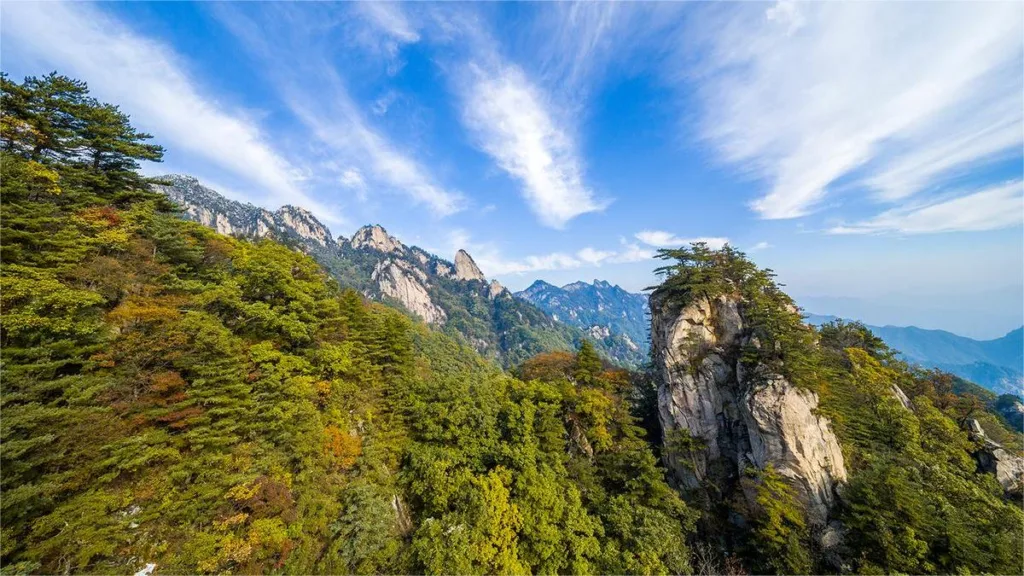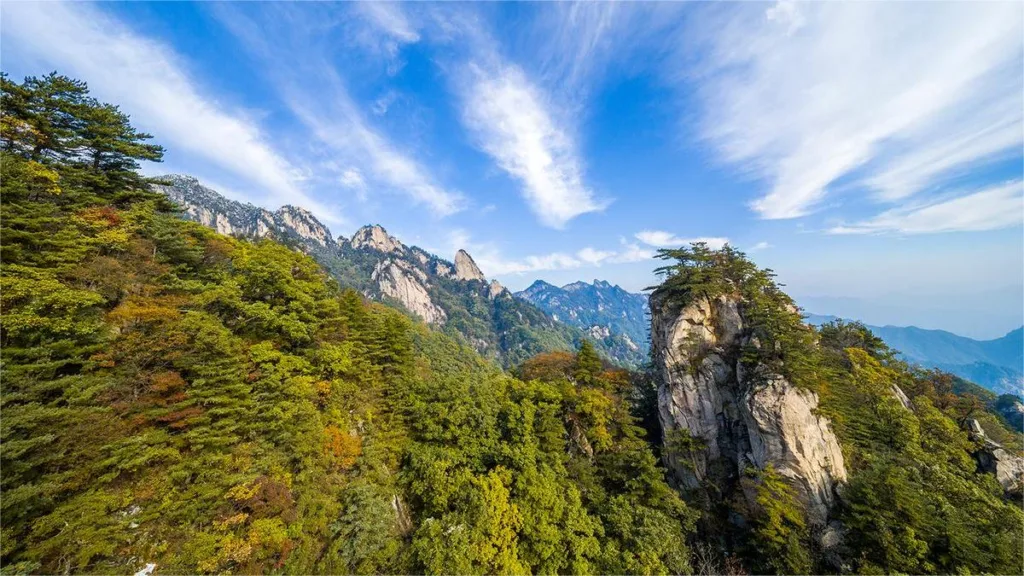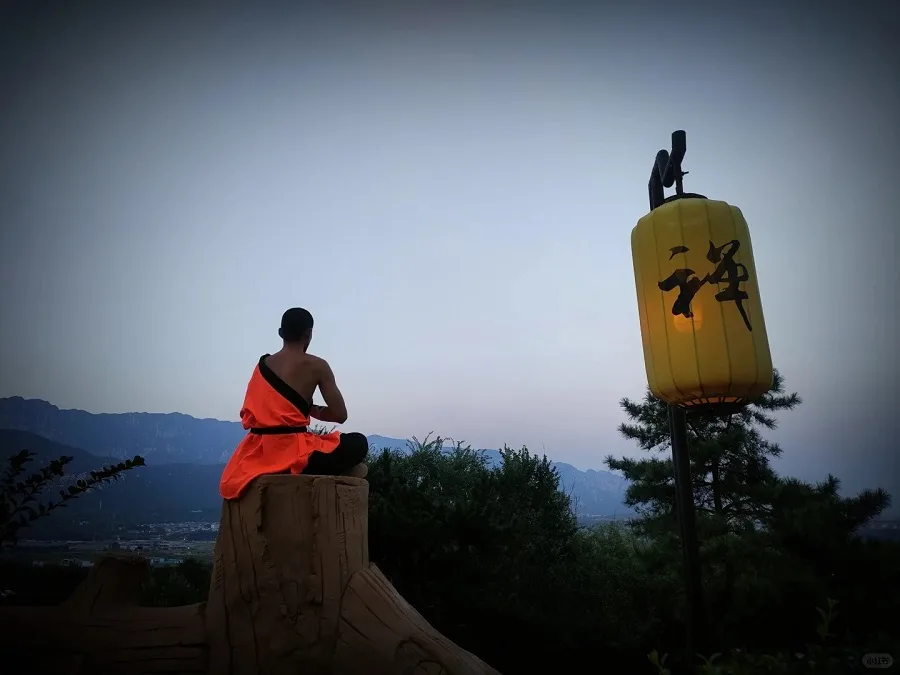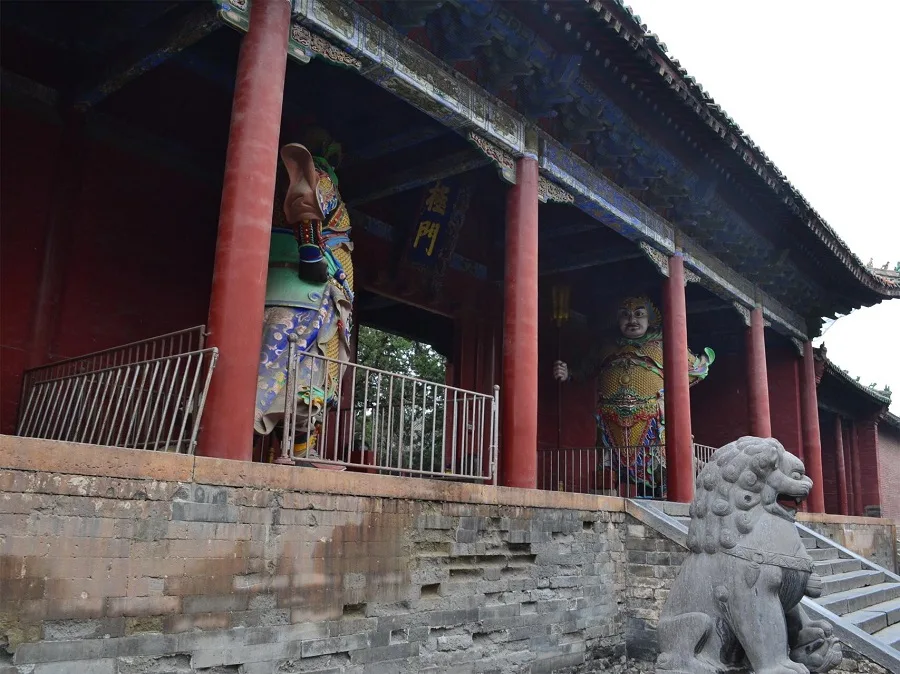Songshan Mountain, Dengfeng – Ticket, Opening Hours, Location, and Highlights


Songshan Mountain (嵩山), also known as Zhongyue, is one of China’s Five Great Mountains and a sacred site of the Quanzhen Taoist sect. Located south of the Yellow River, Songshan stretches from the Shaolin River in the central part, with Taishi Mountain to the east and Shaoshi Mountain to the west. It is considered a cradle of Chinese civilization and designated as a World Geopark, earning it the nickname “Natural Geological Museum.”
Renowned for its cultural and historical significance, Songshan boasts several ancient landmarks. These include the Han Dynasty ceremonial architecture known as the “Three Gates of Han,” the birthplace of Zen Buddhism – Shaolin Temple, the origin of Daoism – Zhongyue Temple, one of the Four Great Academies of the Song Dynasty – Songyang Academy, the oldest surviving brick pagoda in China – Songyue Pagoda, and the oldest and most intact astronomical observatory in China – Guangxing Terrace. The mountain is adorned with a plethora of cultural relics, reflecting the convergence of Buddhism, Daoism, and Confucianism, showcasing its profound cultural heritage.
Table of Contents
- Basic Information
- Location and Transportation
- Highlights of Songshan Mountain
- Vlog about Songshan Mountain
Basic Information
| Estimated Length of Tour | 1 – 2 days |
| Ticket Price | Shaolin Temple: 80 RMB Songyang Academy: 50 RMB Taishi Mountain: 50 RMB Fawang Temple: 20 RMB Qimu Que: 50 RMB Huishan Temple: 40 RMB Zhongyue Temple: 30 RMB Luya Cliff Waterfall: 50 RMB |
| Opening Hours | 8.00 – 17.00 |
| Telephone Number | 0086-0371-62745000 0086-0371-62745599 |
Location and Transportation
Songshan Mountain is located in Dengfeng City, Zhengzhou, Henan Province. Visitors can take bus route 8 within Dengfeng City and get off at Yongtai Zen Temple Stop (永泰禅寺站), then it’s about a 20-minute walk to reach the mountain.
Highlights of Songshan Mountain
Shaolin Temple Scenic Area

The Shaolin Temple Scenic Area is a world-renowned tourist destination and one of the first batch of 5A-level scenic spots designated by the National Tourism Administration. It boasts a wealth of cultural and natural attractions. The cultural landmarks within the core area of 2.18 square kilometers include the Shaolin Temple, known as the “Number One Temple in the World,” the birthplace of Shaolin martial arts, and the largest and most numerous pagoda forest in China. Additionally, visitors can explore the earliest surviving stone que of Shao Shi que, the Martial Arts Hall, the Cave of Bodhidharma, the Ancestor Monastery, the Second Ancestor Monastery, the Ten Directions Zen Temple, and the Ganlu Terrace. The natural landscapes are concentrated in the Sanhuangzhai area of Shaoshi Mountain, blending the three major tectonic and land formation movements of “Songyang, Zhongyue, and Shaolin” during the pre-Cambrian period. It is the best viewing area of the Songshan World Geopark, featuring over 40 representative landscapes such as Monkey Gazing at the Sky, Cloud Peak Tiger Roaring, Sunset at Yuzhai, and Autumn Scenery of Shaoshi.
Zhongyue Scenic Area

The Zhongyue Scenic Area is home to the Tai Shi que and Zhongyue Temple, constituting an unparalleled architectural complex with unparalleled historical value. It serves as an outstanding example of spatial arrangement in ancient Chinese temple architecture and bears witness to ancient mountain worship. The architectural influence of Zhongyue Temple has impacted the formation of the architectural forms of the other four sacred mountains in China. Zhongyue Temple is the most complete and largest preserved architectural complex among the Five Sacred Mountains, retaining the regulations established after the Qing Dynasty’s reconstruction. The temple comprises 39 buildings, including halls, palaces, pavilions, and towers. Tai Shi que, located on the central axis 600 meters south of the Tianzhong Pavilion of Zhongyue Temple, is the divine que of the former Tai Shi Temple, built in the fifth year of the Yongchu era of Emperor An of the Eastern Han Dynasty (118 AD) by Lü Chang, the county magistrate of Yangcheng at the time. It is collectively known as the “Han Three Que of Zhongyue” along with the Shao Shi que and Qimu que.
Songyang Scenic Area

Songyang Academy, originally known as Songyang Temple, was founded in the eighth year of the Taihe era of the Northern Wei Dynasty (484 AD). Initially used as a Buddhist activity site, it later became a Taoist center during the Sui and Tang Dynasties. Emperors Gaozong and Wu Zetian of the Tang Dynasty established their palaces here twice. During the Northern Song Dynasty, it emerged as a renowned educational institution where eminent scholars such as Fan Zhongyan, Cheng Yi, Cheng Hao, and Sima Guang lectured. Sima Guang completed part of his monumental work “Comprehensive Mirror to Aid in Government” (Zizhi Tongjian) here. The scholarly activities of these luminaries not only elevated Songyang Academy to the forefront of the Northern Song Dynasty’s four major academies but also made it one of the birthplaces of Neo-Confucianism during the Song Dynasty.
Vlog about Songshan Mountain
Henan scenery, Zhengzhou attractions